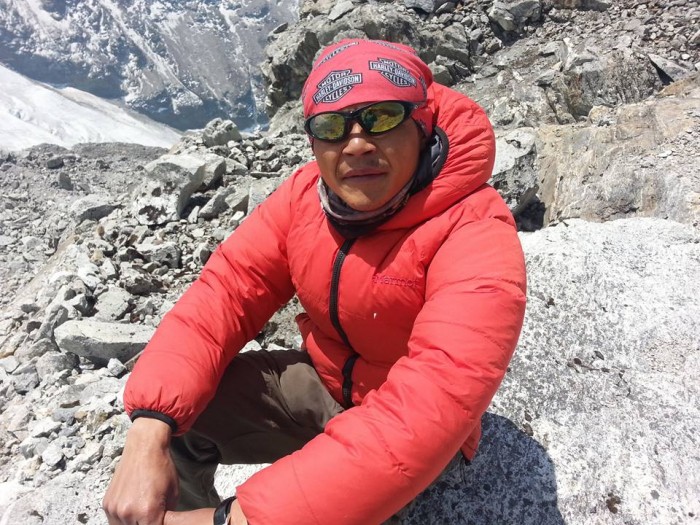Embarking on a Makalu expedition, the fifth-highest mountain in the world requires careful planning and meticulous preparation. Situated on the border between Nepal and Tibet, Makalu presents a formidable challenge to climbers, with its technical terrain, high-altitude conditions, and unpredictable weather. Success at this peak demands not only physical prowess but also the right gear to ensure safety and efficiency. In this article, we will delve into the specific equipment needed for a Makalu expedition, addressing the unique challenges posed by this majestic mountain.
-
Climbing Gear:
a. Mountaineering Boots: Makalu's diverse terrain demands versatile, insulated, and crampon-compatible boots. These must provide both warmth and durability while maintaining the necessary stiffness for climbing in varied conditions.
b. Crampons and Ice Axes: Steep ice and mixed terrain are common on Makalu. As such, climbers require robust crampons and technical ice axes to navigate through crevasses and ascend icy slopes safely.
c. Harness and Climbing Helmet: Essential for safety during roped sections, a comfortable harness with ample gear loops and a well-fitted climbing helmet is crucial for protection against falling debris and potential rockfall.
d. Ropes: Dynamic and static ropes are necessary for different climb sections, especially during technical ascents and traverses. High-quality, lightweight ropes with proper length and strength are vital.
-
Clothing:
a. Layered Clothing System: The unpredictable weather in Makalu necessitates a layered approach. Climbers should have a moisture-wicking base layer, an insulating mid-layer, and a waterproof outer layer to adapt to changing conditions.
b. Down and Synthetic Insulation: Given the extreme cold at higher altitudes, down jackets and pants are essential for maintaining body warmth during rest stops and bivouacs.
c. Gloves and Mittens: Protection against frostbite is critical, making high-quality, insulated gloves and mittens with liners a must-have.
-
Camping Equipment:
a. Tents: Lightweight, yet sturdy, tents that withstand high winds and heavy snowfall are crucial for establishing safe bases and higher-altitude camps.
b. Sleeping Bags: Insulated sleeping bags rated for extremely low temperatures are essential for a good night's rest in the frigid mountain environment.
c. Cooking Gear: Lightweight stoves, fuel, and cookware are necessary for preparing hot meals and beverages, boosting climbers' energy and morale.
-
Navigation and Communication:
a. GPS Devices and Maps: Accurate navigation is vital on Makalu's complex terrain. GPS devices, complemented by detailed maps, aid climbers in route finding.
b. Communication Devices: Satellite phones and radios enable climbers to stay in contact with base camp and other team members, ensuring effective coordination and safety.
Successfully conquering Makalu requires a harmonious blend of physical prowess and the right equipment. The gear mentioned above forms the backbone of any Makalu expedition, offering climbers the tools they need to face the challenges posed by this majestic peak. Investing in high-quality, reliable equipment is not just a matter of comfort but a crucial aspect of ensuring the safety and success of the entire team on the formidable slopes of Makalu.
The Best Time to Climb Makalu:
Timing is crucial when planning a Makalu expedition, as the weather conditions play a pivotal role in determining the success of the climb. The best window for climbing Makalu is during the pre-monsoon and post-monsoon seasons, typically from April to early June and September to October.
During these periods, climbers can benefit from more stable weather conditions, milder temperatures, and reduced avalanche risks. The pre-monsoon season offers clear skies and less precipitation, while the post-monsoon season provides stable weather and breathtaking views of the surrounding landscapes. It's essential to avoid the monsoon season, from June to August, when heavy rainfall and increased avalanche risks make climbing hazardous.
Climbing Routes to the Summit:
Makalu boasts several challenging routes that cater to varying skill levels and preferences. The standard route, known as the South East Ridge, is the most popular path to the summit. This route starts from the Nepalese side and involves navigating through crevasses, steep snow and ice slopes, and technical rock sections. Climbers can expect to encounter diverse challenges, including the notorious "Black Pyramid" – a steep, exposed rock section.
For those seeking a more technical and challenging ascent, the West Face presents an alternative route. This route is known for its difficulty, requiring advanced climbing skills and a high level of experience. The West Face poses a formidable challenge, testing climbers with its steep rock walls, ice features, and unpredictable weather.
Costs Associated with a Makalu Expedition:
Embarking on a Makalu expedition involves various costs, including permits, guide fees, equipment, and logistical expenses. Climbers are required to obtain a permit from the Nepalese government, and the cost varies depending on the season. Additionally, hiring experienced guides and support staff is crucial for a safe and successful ascent. The expertise of these professionals comes at a cost, reflecting their knowledge of the terrain, weather patterns, and emergency procedures.
Equipment costs are another significant consideration, encompassing high-quality gear such as crampons, ice axes, harnesses, and technical clothing suitable for extreme conditions. Logistics, including transportation to and from base camp, accommodation, and meals, contribute to the overall expenses.
Embarking on a Makalu expedition is a test of both physical and mental endurance, offering climbers the chance to conquer one of the world's most challenging peaks. Timing the climb during the optimal seasons, selecting the right route based on skill level, and understanding the associated costs are crucial elements in preparing for this extraordinary adventure. As climbers ascend Makalu's towering heights, they not only conquer a mountain but also unlock a profound sense of accomplishment and a deep connection to the majesty of the Himalayas.

 Plan Your Trip Now
Plan Your Trip Now 


